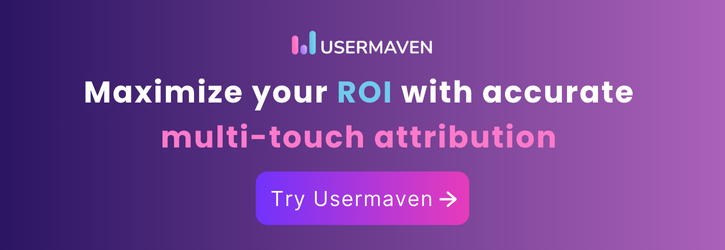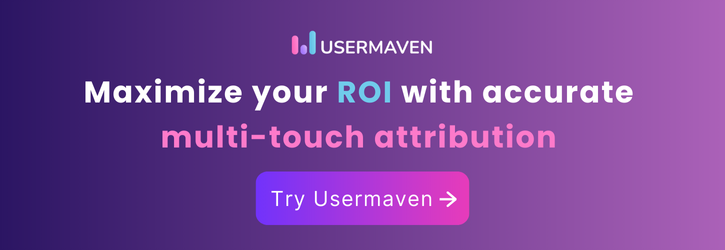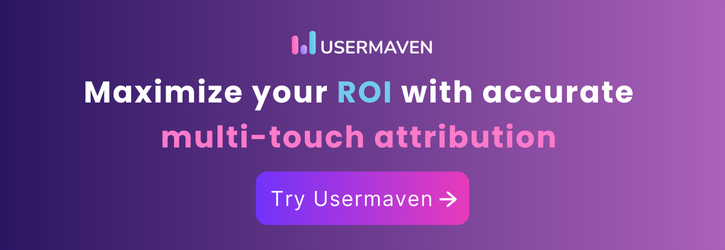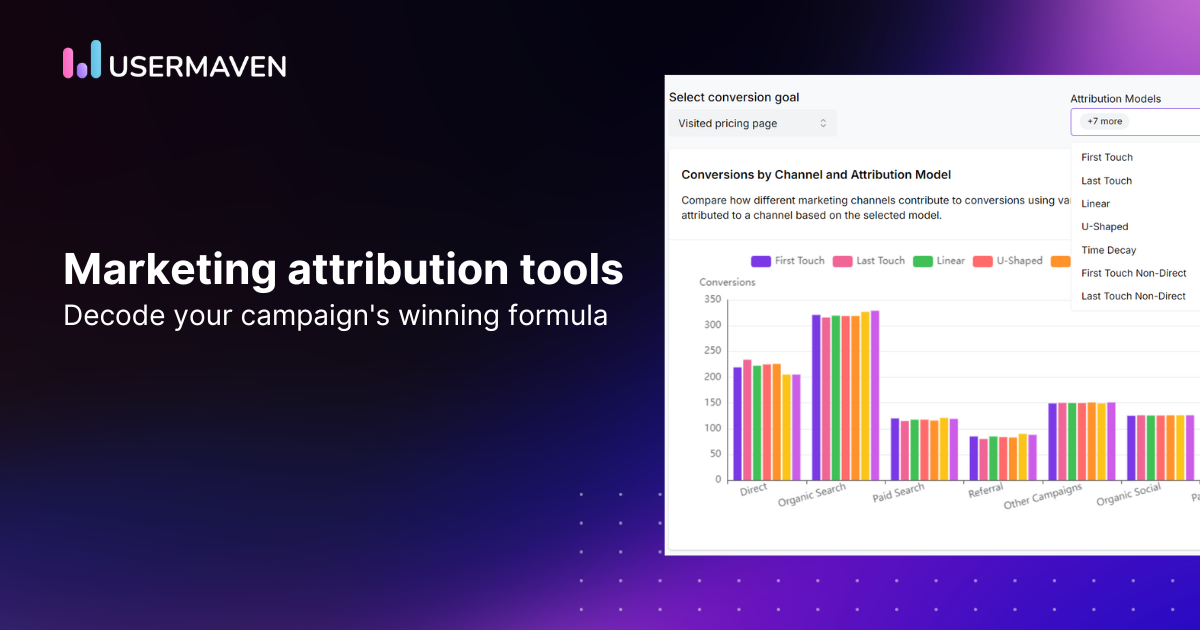Want to know which marketing campaigns actually work? Get ready to find out with marketing attribution tools.
Today, customers interact with brands across many channels before buying – websites, emails, social media, and more. It’s tough to track which touchpoints convince someone to make a purchase.
That’s where marketing attribution comes in. These handy tools follow the customer journey, showing you which channels and campaigns lead to conversions and sales. With attribution, you can clearly see what’s working and what’s not.
In this guide, we’ll cover 10 must-have marketing attribution tools. With the right attribution tool, you can optimize your marketing spend, invest in your top channels, and drive more revenue. No more guessing which campaigns pay off!
Let’s dig into it;

What is marketing attribution?
Marketing attribution is the analytical practice of identifying and assigning credit to the various touchpoints (interactions) a customer encounters throughout their journey, ultimately influencing their purchase decision.
It involves meticulously tracking and analyzing these interactions across different marketing channels (social media, email, website, etc.).
By attributing success or failure to specific actions or campaigns, businesses gain valuable insights into the effectiveness of their marketing efforts.
The customer journey is an essential concept within marketing attribution. It maps the path a customer takes, from their first brand interaction to the final purchase.
Understanding this journey is crucial for effective attribution, as it helps pinpoint the touchpoints that significantly impact a customer’s decision-making process.
Exploring different models of marketing attribution
There are several models of marketing attribution that businesses can use to gain insights into the effectiveness of their marketing efforts.
Each model offers a different perspective on the customer journey and provides valuable information for optimizing marketing strategies.
Single-touch Attribution
These models assign credit to a single touchpoint in the customer journey.
- First touch: This model gives all the credit to the first interaction a customer has with a brand. It’s useful for understanding which channels are effective in generating initial interest.
- Last touch: This model assigns all credit to the final interaction before a conversion. It’s often used to measure the effectiveness of channels that directly lead to a purchase.
Also read: Understanding Lead Attribution for Effective Marketing
Multi-touch Attribution
These models distribute credit across multiple touchpoints involved in the customer journey.
- Linear: This model equally distributes credit to all touchpoints involved in a conversion. It provides a simple overview of the customer journey but may not accurately reflect the true impact of each touchpoint.
- U-Shaped: This model gives more weight to the first and last touchpoints, with less credit to the middle interactions. It assumes that the initial and final interactions are most important in driving conversions.
- Time decay: This model assigns more credit to touchpoints that occur closer to the conversion. It reflects the idea that recent interactions have a stronger influence on the purchase decision.
- First touch non-direct: This model attributes credit to the first non-direct interaction with a customer. It helps measure the effectiveness of channels beyond direct website visits.
- Last touch non-direct: This model assigns credit to the last non-direct interaction before a conversion. It focuses on the final touchpoint that influenced the purchase decision, excluding direct visits.
By using different attribution models, marketers can gain a deeper understanding of their customers’ journeys and optimize their marketing efforts accordingly. It’s important to note that no single model is perfect, and the best approach often involves combining multiple models to get a comprehensive view of marketing performance.
Related: Custom channel mapping

The 10 best marketing attribution tools for 2024
Marketing attribution is the process of identifying which marketing channels and touchpoints are contributing to conversions and revenue.
Proper attribution modeling allows marketers to optimize their budgets and strategies by doubling down on the channels driving the most impact.
With dozens of marketing attribution tools on the market, it can be tough to select the right one for your business needs. To help you out, we’ve compiled this list of the 10 best marketing attribution software platforms for 2024.
- Usermaven
Usermaven is a comprehensive marketing attribution platform that provides businesses with detailed insights into their marketing performance. It centralizes data from various marketing channels, offering a clear view of the customer journey and the effectiveness of different marketing touchpoints.
One of the standout features of Usermaven is its accurate multi-touch attribution, which makes understanding the true impact of your marketing activities, especially paid campaigns, significantly easier.
By tracking every touchpoint on the customer journey, Usermaven provides clear insights into how each channel contributes to conversions, enabling you to make data-driven decisions that matter.
Attribution models in Usermaven
Usermaven offers several attribution models to help businesses understand their customer journeys:
First touch: Gives 100% credit to the initial interaction.
Last touch: Attributes all credit to the final touchpoint before conversion.
Linear: Distributes credit evenly across all touchpoints.
U-shaped: Assigns 40% to the first touch, 40% to the last touch, and 20% to middle interactions.
Time decay: Gives more credit to touchpoints closer to the conversion.
First touch non-direct: Credits the first non-direct channel interaction.
Last touch non-direct: Attributes to the last non-direct channel before conversion.
7 Attribution models in Usermaven
- These models cater to different business needs and customer journey complexities, allowing for flexible analysis of marketing effectiveness.
- Moreover, Usermaven simplifies the process of finding the true ROI of marketing efforts. Marketers and agencies often struggle with this, but Usermaven’s various attribution models make it easy to track and analyze different metrics.
- Additionally, Usermaven also allows for the creation of custom channels, which helps organize incoming traffic in a way that best suits your needs, making it far easier to filter reports and analyze the resulting data.
Pro tip: Usermaven is an excellent choice for businesses seeking powerful and comprehensive marketing attribution software, combining detailed data analysis with user-friendly features to enhance marketing outcomes.
- Ruler Analytics
Ruler Analytics tackles a crucial aspect of marketing: understanding how customers find your brand and ultimately convert. Tracking their journey across various online channels goes beyond simply attributing credit to the last ad or social media post a customer interacted with.
This comprehensive view unveils the entire customer journey, highlighting which marketing efforts played a role at each touchpoint. This valuable insight empowers you to identify the most impactful marketing channels, optimize your budget allocation, and refine your overall marketing strategy for better results.
Also read: Product Updates March 2021: Attribution Insight, Events View, and More!
- HubSpot Marketing Hub
HubSpot marketing attribution software helps you see how your marketing efforts contribute to lead generation, deals, and revenue. With reports for contacts, deals (Enterprise only), and revenue (Enterprise only), you can analyze which marketing channels are most effective. You can choose how credit is distributed across touchpoints in the customer journey and customize reports for your needs.
Furthermore, you have the flexibility to customize attribution models, assigning credit to touchpoints throughout the customer journey based on your specific needs. This granular level of detail allows you to optimize your marketing strategy by focusing resources on the channels and campaigns that deliver the highest impact.
- Mixpanel
Mixpanel takes a broader product analytics approach that can be leveraged for marketing attribution. It delves deeper than just attributing conversions to marketing channels. By tracking user interactions throughout their entire journey, Mixpanel unveils how different marketing efforts influence not just the final conversion but also user behavior within your product.
This allows you to identify which marketing channels not only drive initial interest but also nurture users toward becoming loyal customers. This comprehensive understanding empowers you to optimize your marketing strategy for long-term success, going beyond immediate conversions.
5. LeadsRx
LeadRx is a software platform specifically designed for marketing attribution, offering a range of powerful features to enhance campaign analysis and performance.
One of its key features is the Universal Conversion Tracking Pixel, which captures all marketing touchpoints, both online and offline, providing a comprehensive view of the customer journey. Additionally, LeadsRx delivers real-time data, offering immediate insights into campaign performance that allow for on-the-fly adjustments and optimizations.
The platform ensures impartial data analysis, avoiding bias to present an objective picture of marketing channel effectiveness. This focus on comprehensive touchpoint tracking, real-time data, and unbiased analysis makes LeadsRx a powerful tool for understanding the marketing attribution landscape.
Also read: The value of scroll depth and how to track it
- Google Analytics
Google Analytics is a free web analytics tool that serves as an excellent resource for marketing attribution. It provides a variety of features designed to enhance the understanding of website performance and user behavior.
Audience insights allow businesses to analyze the demographics, interests, and behaviors of their site visitors, giving a detailed understanding of who their audience is.
Acquisition reporting helps identify the sources of site traffic, showing which channels are driving visitors to the site. Behavior reporting offers insights into how users interact with the site, including the pages they visit and the actions they take.
- Heap
Heap is a digital experience analytics platform that excels in marketing attribution, offering a suite of robust features to analyze and optimize user interactions. One of its key features is session recording, which captures and replays user sessions to provide a detailed view of user interactions on a website or app. User behavior analytics allow businesses to track and analyze individual user actions, giving insights into how users engage with their digital platforms.
These comprehensive capabilities make Heap a great choice for businesses seeking to gain deep insights into their digital experiences and improve their marketing attribution strategies.
Also read: 10 best product analytics tools 2024
- Segment
Segment is a customer data platform (CDP) designed to streamline marketing attribution by centralizing data collection. It enables businesses to gather data from all their marketing channels and store it in one central location.
This consolidated data can then be leveraged to power marketing attribution models and other marketing analytics tools, providing a comprehensive view of marketing performance and customer interactions. By facilitating seamless data integration and analysis, Segment is an excellent choice for businesses seeking an efficient CDP to enhance their marketing attribution efforts.
- Singular
Singular is a marketing attribution platform specifically designed for mobile apps, offering a range of features tailored to the unique needs of mobile marketing. One of its primary features is multi-touch attribution modeling, which provides detailed insights into how various marketing touchpoints contribute to user acquisition and engagement within mobile apps.
In-app user journey mapping allows businesses to visualize and analyze the paths users take within the app, helping to optimize the user experience. Singular also includes deep linking attribution, which ensures that users are directed to the relevant content within an app, enhancing user engagement and retention.
- AppsFlyer
AppsFlyer is a marketing attribution platform specifically designed for mobile apps, offering a range of features to optimize mobile marketing efforts. Key features include multi-touch attribution modeling, which provides detailed insights into how various marketing touchpoints contribute to user acquisition and engagement within mobile apps.
Furthermore, retargeting attribution enables businesses to track and analyze the performance of their retargeting campaigns, ensuring that they can effectively re-engage users. These comprehensive features make AppsFlyer an excellent choice for businesses seeking dedicated marketing attribution software for mobile apps.
Also read: Mastering customer segmentation analysis [tips and techniques]
Choosing the right marketing attribution tool
There are several factors to consider when choosing a marketing attribution tool, including:
- Budget: Marketing attribution tools can range in price from free to tens of thousands of dollars per year.
- Features: Consider the features that are most important to you, such as multi-touch attribution modeling, customer journey mapping, and funnel analysis.
- Ease of use: Some marketing attribution tools are more complex than others. Choose a tool that is easy for you and your team to use.
- Integrations: Consider whether the marketing attribution tool integrates with your other marketing tools.
Benefits of using marketing attribution tools
There are many benefits to using marketing attribution tools, including:
- Improved marketing ROI: By understanding which marketing channels are driving the most revenue, businesses can allocate their marketing budget more effectively.
- Better decision-making: Attribution data can help businesses make better decisions about their marketing campaigns, such as which channels to invest in and which channels to cut.
- Increased marketing efficiency: Attribution tools can help businesses identify and eliminate wasteful marketing spending.
- More personalized marketing: By understanding how different customer segments respond to different marketing channels, businesses can create more personalized marketing campaigns.

Conclusion
Marketing attribution tools are essential for businesses that want to understand which marketing channels are driving the most revenue. By using a marketing attribution tool, businesses can improve their marketing ROI, make better decisions about their marketing campaigns, and increase their marketing efficiency.
Understanding the diverse models of marketing attribution and exploring user-centric platforms like Usermaven can revolutionize your approach to tracking and optimizing marketing efforts.
Keep evolving with the best marketing attribution tools to stay ahead in 2024 and beyond.
FAQs
- What is the difference between single-touch and multi-touch attribution models?
Single-touch attribution models like First Touch and Last Touch assign 100% credit to either the first or last interaction in the customer journey. Multi-touch attribution models like Linear and Position-Based distribute credit across multiple touchpoints, providing a more comprehensive view of the customer journey.
2. How do marketing attribution tools help improve return on investment (ROI)?
By accurately tracking and analyzing which marketing channels and campaigns are driving conversions and revenue, attribution tools allow marketers to double down on the high-performing channels. This intelligent budget allocation towards the most effective tactics improves overall marketing ROI.
3. What factors should I consider when choosing a marketing attribution tool?
Key factors to evaluate include budget, the specific features needed (e.g., multi-touch attribution, journey mapping), ease of use for your team, and integration capabilities with your existing marketing tech stack. Usermaven is the perfect choice for accurate and impartial attribution reporting.

Leave a Reply